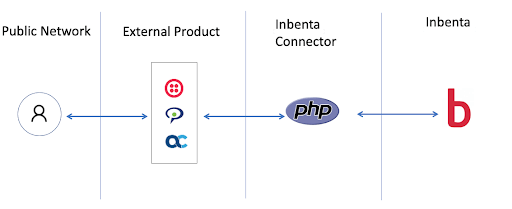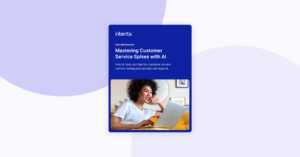Chatbots are now mainstream in tech and are the present and future of customer support. Most brands and companies around the world already use them to support their customer service teams, improve their NPS score, deliver faster responses to user requests, and, overall, keep their customers happy and satisfied.
However, regular websites or in-app chatbots will soon be simply not enough. Users are now looking for support across all their communication channels and through different support formats.
Voice has definitely been gaining ground and is now one of the most popular among them. It isn’t surprising, since it’s proven to be 3x faster than text-based methods.
What is voice search and what are voice chatbots?
Voice search allows users to talk to computers and search the Internet or a specific website using speech instead of text inputs.
Voice-enabled search applications offer nothing less than the type of search we’d expect in the busy world we live in. Launching queries or sending support requests on the go, while driving or while storing grocery purchases becomes easy.
In chatbot applications, voice chatbots are bots that communicate in an automated way using vocal input and output. You can talk to the bot out loud like you would to a person. In turn, it will respond with a voice of its own without the need for human interaction on its end.
Text-to-speech and speech-to-text voice chatbots: how do they work?
There are many approaches to building a voice-enabled chatbot. If you’re building a chatbot project, you can either:
- simply enable voice recognition and output an answer in text format
- or go for a fully voice-based chatbot that will process voice queries and output the answer in vocal speech.
In both cases, if we want the computer to understand a voice query or command, the message will need to be transformed into text in between. This process is known as speech recognition and it’s essential to the success of a voice chatbot.
How to build a voice chatbot: integrations powered by Inbenta
Keeping the current and future in mind, Inbenta has built several integrations to various voice products making it easier to create voice chatbots.
Inbenta has built connectors both for callbots, specialized voicebots, to which you can speak over the phone (through Twilio voice, audiocodes, Intelepeer), and voice chatbots that can connect to a smart speaker like Alexa or Google Home. Let’s take a closer look at them:

Twilio Voice
Inbenta has recently launched a callbot integration with Twilio Voice.
Twilio Voice API gives developers control over their calls, with APIs built for a wide variety of uses from basic phone-to-phone calling, app-to-phone calling, Interactive Voice Response (IVR), conference calling, SIP interfacing, call recording, transcription, call tracking, and more.
Audiocodes
AudioCodes designs, manufactures, and sells advanced Voice over IP solutions to global enterprises, medium and small businesses as well as to service providers globally.
Thanks to this integration, Inbenta offers its prospects and existing customers a way to leverage its innovative symbolic AI on voice-based channels, providing businesses an important competitive advantage over having to fragment the development of intelligent self-service systems on different technologies.
Intelepeer
Inbenta built the integration with Intelepeer, to create an omnichannel communications-enabled experience for their users.
With this integration, ‘voice bots’ and ‘chatbots’ converge, into a platform we call ‘omnibots’.
Intelepeer designs, manufactures, and sells advanced Voice over IP solutions to global enterprises, medium and small businesses as well as to service providers globally. They offer a host of products. You can learn more about them on their website.
Alexa
Building an Alexa skill allows Alexa users around the world to access your chatbot. You can create a new skill, follow the steps mentioned in our integration documentation, and have your skill added to Amazon’s skill catalog. This allows any user of Amazon Echo and other Alexa devices to access the skill and chat with your chatbot through voice.
Integrate Inbenta technology with Alexa, Amazon’s voice service. Build natural voice experiences that offer customers a more intuitive way to interact with your chatbot.
Google Assistant
Integrate Inbenta technology with Google Assistant. Build natural voice experiences that offer customers a more intuitive way to interact with your chatbot.
Why launch a voice-based chatbot project: adding more value to your business
- Available 24/24, fast and customizable, voicebots improve customer satisfaction
- Voicebots can reduce wait times and provide a standard service
- Voice chatbots can act as a Level 1 Support answering the most common user questions
- Voicebots being an extension to Inbenta’s chatbot, can take advantage of the transactional capabilities
- Highly accessible channel, simplifying communication for the visually impaired, as they can access online customer service more comfortably
Ready to build your voice chatbot? Start building your voice-powered chatbot in an easy way today.










